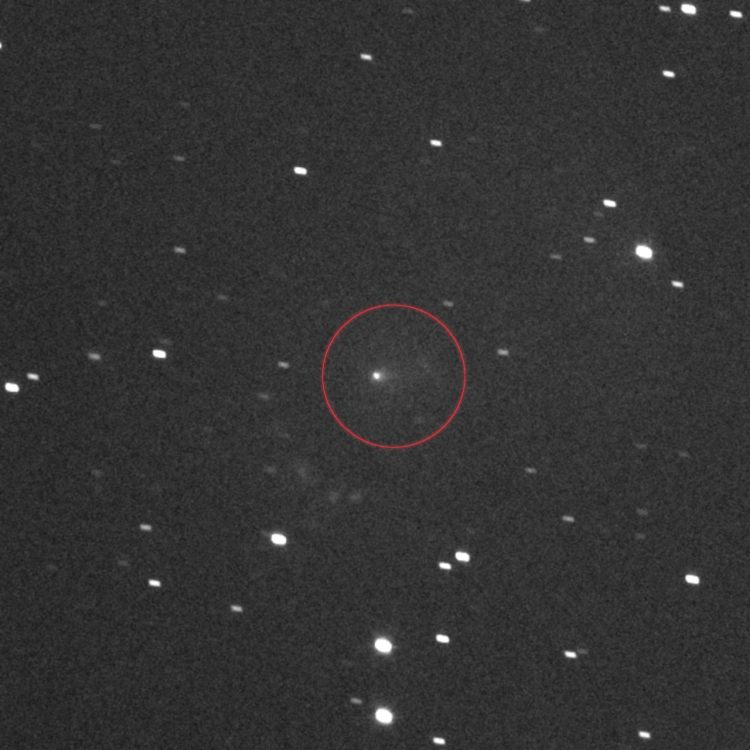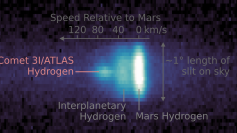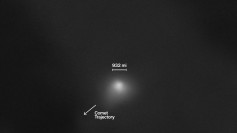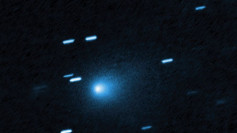NASA's restrained briefing on interstellar object 3I/ATLAS has intensified scrutiny from scientists and space analysts, as renewed attention shifts not only to the comet's unexplained features but also to evidence that the solar system is crossing into a denser region of the Local Interstellar Cloud. With agencies such as the U.S. Space Force highlighting shifting radiation conditions around Earth, researchers argue that the two developments may carry implications far beyond a single celestial object.
During its Nov. 19 press conference, NASA repeated its stance that 3I/ATLAS is a "natural comet," attributing delays in public updates to the government shutdown. Harvard astrophysicist Avi Loeb, speaking shortly afterward, said the agency "emphasized what they believe, not what remains unexplained." He criticized what he described as a narrow focus, asserting that NASA "should have emphasized what we do not understand rather than repeat familiar explanations." Loeb invoked Sherlock Holmes in expressing his frustration: "There is nothing more deceptive than an obvious fact."
Loeb has identified twelve specific anomalies he argues NASA avoided addressing. Among them is the remarkable mass of 3I/ATLAS, which he says is a million times larger than 'Oumuamua and a thousand times larger than 2I/Borisov. He contends that such scale, combined with high velocity in an environment of sparse interstellar material, makes its arrival statistically extraordinary. He also notes its retrograde trajectory, aligned within five degrees of the ecliptic plane, which he estimates has just a 0.2% likelihood of occurring randomly.
Images captured by amateur astronomers depicting "tightly collimated jets" stretching nearly "a million kilometers" form another pillar of Loeb's argument. He contrasts these images with NASA's own, describing the amateur photographs as "far more exciting than the smudged HiRISE image." Other anomalies cited include unusual nickel-to-iron ratios "found in industrially-produced alloys on Earth" and the possibility of non-gravitational acceleration near perihelion.
Parallel to the debate over 3I/ATLAS, researchers tracking heliospheric data say the solar system is entering a thicker segment of the Local Interstellar Cloud, sometimes called the "Local Fluff." Multiple spacecraft, including Voyager, have recorded increasing interstellar hydrogen densities, compressed magnetic boundaries and altered cosmic-ray penetration patterns. In recent weeks, auroras appeared as far south as California, Florida and Texas-an event normally requiring intense geomagnetic storms.
Space policy documents have reflected these changes. The U.S. Space Force's Vector 2025 strategy references "environmental volatility in near-Earth space," "increased atmospheric drag on satellites," and "changing radiation profiles," without naming the dense interstellar cloud. Defense Department analysts already incorporate these factors, as shifts in hydrogen flow affect satellite orbits and higher cosmic-ray levels require recalibrated radiation-hardening models.
The broader implications are most immediate for commercial aviation. Cosmic-ray intensity at cruising altitude is roughly two orders of magnitude higher than at sea level, and experts warn that increased galactic cosmic rays could elevate cumulative exposure levels for pilots, flight attendants and frequent flyers, particularly on polar routes. The phenomenon is well documented in atmospheric radiation science but rarely reflected in public advisories.
Some researchers are now asking whether the heliosphere's ongoing compression could influence the behavior of incoming comets and interstellar objects. Loeb said the patterns emerging from 3I/ATLAS may reflect "unknown physics or unknown engineering," suggesting that unusual environmental conditions or technological activity could play a role.






